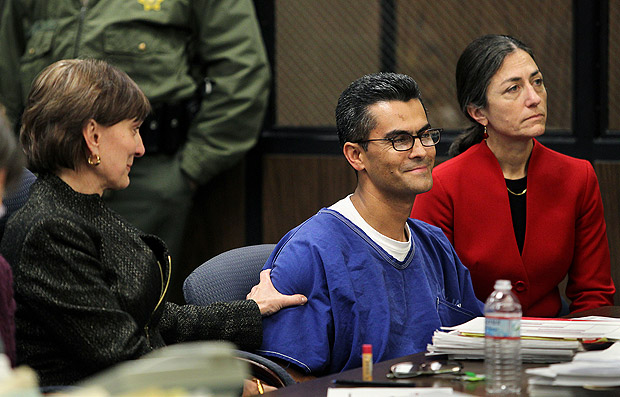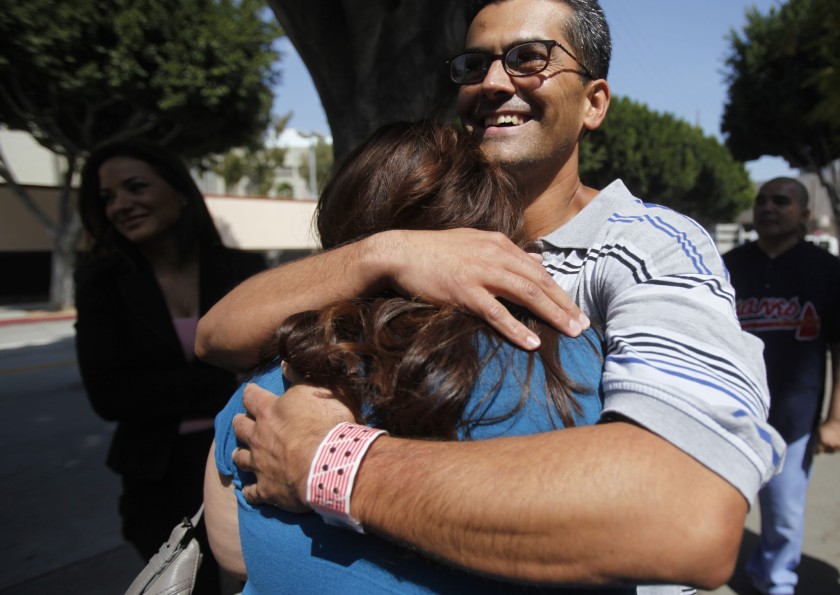By MegAnne Liebsch
June 9, 2020 — In the wake of recent protests calling for an end to police brutality and racial injustice, many activists are calling for sweeping criminal justice reforms. Black and Brown communities are disproportionately targeted through the criminal justice system, including manifestations such as mass incarceration, police brutality or social assistance bans due to previous convictions.
“Racism just permeates the whole system,” says attorney Linda Starr. Starr co-founded the North California Innocence Project (NCIP) at Jesuit-founded Santa Clara University. And, she’s one of many expert lawyers interviewed in Netflix’s docu-series, “The Innocence Files.” The show features eight people convicted and incarcerated for crimes they did not commit and traces their quests for exoneration. The Innocence Files investigates the many instances of racism in policing and criminal courts that disproportionately put more Black and Latino people behind bars.
Two episodes in the series feature Franky Carrillo, a Latino man who spent nearly 30 years behind bars before he was exonerated with the help of a team of lawyers from NCIP. Starr sat down with me to talk about Carrillo’s case and ongoing work for criminal justice reform.
 Franky Carrillo and Linda Starr (right) await the verdict of Franky’s appeal trial (Christina House, Los Angeles Times).
Franky Carrillo and Linda Starr (right) await the verdict of Franky’s appeal trial (Christina House, Los Angeles Times).
Meg: In January 1991, 41-year-old Donald Sarpy was killed in a drive-by shooting. Sarpy’s son and five of his friends witnessed the murder. At 16 years old, Franky Carrillo was accused and eventually convicted of the murder. But in fact, he was at home doing homework at the time of the shooting. The documentary reveals that eyewitness testimony was manipulated before and during the trial. How did this impact the case?
Linda: The first and only witness that they tried to obtain an eyewitness identification from was a gentleman named Scotty Turner. The deputy had a relationship with Scotty and used that against Scotty. He showed Scotty photos from a book and Scotty picked out several potential perpetrators — but all of them were incarcerated at the time. So, then Scotty would choose somebody else. That’s not the way to make an eyewitness identification.
None of the other young men who were at the murder scene were asked to make an identification until six months later. There’s no possible way that any of them could have made an accurate identification of Franky.
Meg: The shooting also happened at night, which makes credible identification nearly impossible. During the exoneration trial in 2011, you and the legal team recreated the shooting for the judge. What was that like?
Linda: That was pretty wild. I was highly skeptical that the judge was going to agree to a crime scene recreation. Before the trial, the team had done it multiple times and found that you couldn’t identify the perpetrator, it was not humanly possible.
Still, I was fearful. I felt like, “Well, we all know we can’t see anything, but let’s just say somebody said they could, then we’re really screwed.” Then we’d have the judge himself saying, “I could see just fine.”
Ultimately, we went out at night in Los Angeles and reenacted the drive-by. Franky’s son was playing the part of the person who had been identified as Franky, which was really quite remarkable. We actually had them do the drive-by multiple times at different speeds, even stopping at a certain point to emphasize the fact that we really could see nothing.
It was very emotional because we were at the house where the shooting had happened. It was much more dramatic than I thought that it would be.
 Carrillo hugs a family member after nearly 30 years in prison (Michael Robinson Chavez / Los Angeles Times).
Carrillo hugs a family member after nearly 30 years in prison (Michael Robinson Chavez / Los Angeles Times).
Meg: Many of the cases in the documentary are deeply emotional. These people have been wrongfully incarcerated for upwards of 20 or 30 years. How does this affect the way you approach these cases as a lawyer?
Linda: It makes it harder because the older the case is, the more documents that have been lost, the more witnesses that aren’t available, the more difficult it can be to unearth the evidence that you need in order to prove that somebody is innocent. It definitely ups the ante.
As far as emotions, I’m moved by the spirituality and grace of the exonerees I’ve worked with. When you see the depth of thought and caring that they have developed in dealing with the injustices they’ve faced, it’s totally humbling.
Meg: “The Innocence Files” features innocence projects and cases nationwide. How did you get involved with the documentary? What was the process for developing the episodes in which NCIP cases were featured?
Linda: It started years ago when Barry Scheck [founder of the original Innocence Project in New York] approached me and Franky about a potential Netflix show that was going to feature wrongful conviction cases and different exonerees. Franky agreed to be featured, and I didn’t hear anything for a really long time. I didn’t have anything to do in shaping the show or forming the show. I was tickled to see how they put the show together.
Meg: Did you find yourself looking at or understanding the case in new ways? Did anything in the process surprise you?
Linda: The director crafted the episodes so that you don’t realize that in Franky’s first trial the jury hung. The way the director revealed the first trial made it even more powerful. I thought that was a very well-done technique to show how the case changed between the two trials.
The directors were extraordinary during my interview. It was like five hours of interview — I felt as if they were looking into my soul. I found myself emotional, which surprised me, because the case ended in 2011 and Franky is doing well.
Meg: The documentary series shines a light on the flaws of the criminal justice system that lead to wrongful convictions, including misuse of forensic evidence, eyewitness testimony and law enforcement corruption. What is your experience with these issues?
Linda: Misuse of forensic science is a huge issue. What’s particularly bothersome and problematic about poor forensic science is juries love science. They get an expert in court that says, “It’s science,” and then the jury doesn’t have to worry about bias or mistaken memories.
Prosecutorial police misconduct is another issue. Sometimes it’s purposeful, sometimes it’s not. Often cases have a combination of all these factors. There’s ineffective assistance of counsel, there’s information that was withheld from the defense attorney, there’s a bad eyewitness identification.
And, mass incarceration contributes enormously. We have so many people incarcerated unnecessarily and wrongfully. Racism just permeates the whole system. Assumptions and implicit bias influence the entire system.
Meg: How can we prevent these structural issues in the future?
I wish we could give a list of ways we could correct it and then people could just adopt them. But there are certain best practices that we as innocence organizations have identified and lobbied to have implemented into our criminal justice system, including forensic science reforms and instituting best practices for eyewitness interviews with law enforcement agencies.
And, there can never be enough attention paid to how racism is influencing our system and anything we can do to reduce that implicit and overt bias that’s at work. Holding people accountable, holding police officers and district attorneys and attorneys general accountable for when they get things wrong. Not because it’s about punishment, but because that’s the way you make things change.
For more information about criminal justice reform, check out these resources from Catholic Mobilizing Network.
